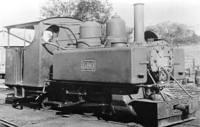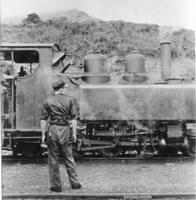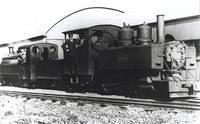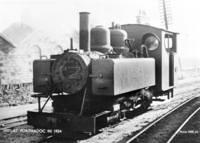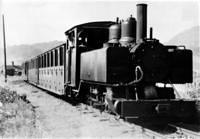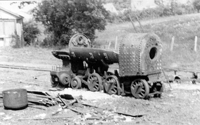Baldwin '590'
4-6-0 Pannier Tank Locomotive
We need all donations - however small. Please be generous.
590 was a 4-6-0T locomotive of the Baldwin class 10-12-D. It was completed on 1st March 1917, and was part of a batch of locomotives (works numbers 45133 to 45236) ordered by the War Department from the Baldwin Locomotive Works, Philadelphia, USA, for use behind the Western Front. The War Department Light Railway locomotives were different from the original 10-12-D locomotives as they had half instead of full cabs.
The War Department gave this batch of locomotives the WD numbers 1001 to 1104. However, at some time during 1917, WD locomotives 1005 to 1150 were renumbered 546 to 700; thus 590 received the number by which it subsequently became known.
Following wartime service, the locomotive was overhauled by Bagnalls of Stafford in 1919. It was bought for use on the Welsh Highland Railway by Colonel Holman F. Stephens for the sum of £240 from the Government Property Disposals Board. It arrived at Dinas Junction on 4th July 1923, having been delivered by E.W. Farrow and Son of Spalding, Engineers Merchants. Due to its size, it was restricted to use on the Welsh Highland Railway, never seeing service on the Festioniog Railway.
590 was reputedly a rough riding locomotive, and was later confined to freight traffic as this was slower. It's ride may well have been linked reverse running without a pony truck under the cab (Russell's 2-6-2 configuration being ideal for bi-directional running). Prior to 1934, it faced Porthmadog and carried a black livery. Then it was turned and repainted in red.
In 1942, Cohen's, the contractor commissioned to scrap the W.H.R. permanent way, attempted to steam 590. However, the locomotive was in very bad condition, leaking steam badly. So it was cut up for scrap.
The surviving tank was used for oil storage in a contractor's yard. The only other surviving part of 590 is a builder's plate which is on display at the National Railway Museum, York, along with a builder's plate and nameplate from Russell. There are few examples of this type of locomotive still at work in India. There are also two in Britain: No. '794' has recently been loaned to the WHR.
Please contribute to the Peter Thomason '590' Memorial Fund and help rebuild Baldwin 794 as a replica of 590.
Specifications
| Builder | Baldwin | ||
|---|---|---|---|
| Built | 1917 | ||
| Works number | 45172 | ||
| Type | Pannier tank 10-12-D ¹ | ||
| Wheel arrangement | 4-6-0 | ||
| Driving wheel diameter | 23½" | 597mm | |
| Tank capacity | - | ||
| Heating surface | - | ||
| Boiler pressure | - | ||
| Cylinders | Two off, 9" x 12" | 229mm x 305mm | |
| Tractive effort | 5429 pounds | at 85% boiler pressure | |
| Weight | 14½ tons | 14.7t | in working order |
| Maximum axle load | - | ||
| Arrived W.H.R. | 1923 | ||
| Scrapped | 1941 or 1942 | ||
¹ - explanation of the Baldwin Numbering Scheme.
See Also
- One pannier side tank is on display in Porthmadog - visit the museum to experience more.
- More on the history of the WHR locomotives.
- Baldwin '794' is being restored for use on the WHR.
